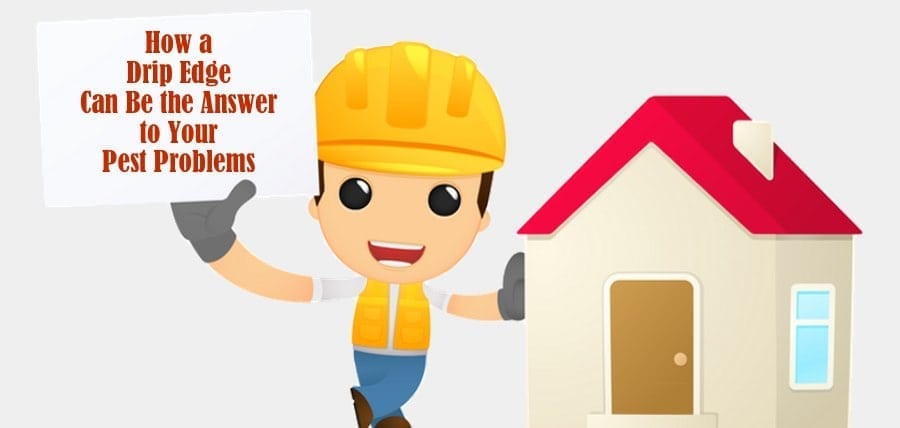How a Drip Edge Can Be the Answer to Your Pest Problems
What is a Drip Edge?
A drip edge goes over the lower edge of a roof. When it extends about 2 inches past the fascia board, the rainwater runoff goes directly into the gutters and where it’s supposed to go. When the overhang is too narrow or too short, the rainwater runoff will leak behind the gutters, which can lead to rotting wood, flood basements, and stained siding. As such, a drip edge creates a small “seal” all around your roof to keep out water, wind, debris and, of course, critters.
Do I have a Drip Edge?
If your house was built before 1970, there may not be a drip edge attached to the roof. That’s because, prior to 1970, it was completely the builder’s choice whether to install a drip edge. However, since 2012, the International Residential Code (IRC) has required metal drip edges on all roofs. So if your house is a more recent build you’re probably safe. But, it still wouldn’t hurt to check as different regions can have different standards and codes.
The Code Around Drip Edges
Section R905.2.8.5, Drip Edge, the IRC requires: “A drip edge shall be provided at eaves and rake edges of shingle roofs. Adjacent segments of drip edge shall be overlapped not less than 2 inches. Drip edges shall extend not less than 1/4 inch below the roof sheathing and extend up back onto the roof deck not less than 2 inches. Drip edges shall be mechanically fastened to the roof deck at not more than 12 inches on center with fasteners (1, 2) as specified in Section R905.2.5 [roofing nails with minimum 12-gauge shank and 3/8-inch-diameter head]. Underlayment shall be installed over the drip edge along the eaves and under the drip edge along the rakes.”
Unfortunately, most of the drip edges you will find in the store are very thin and weak. The ones found in stores normally are about .011-inch-thick, and the thinnest you really want is .019-inch. While that may seem like a lot of fuss over a few thousandths of an inch, .019 is over 40 percent stronger than .011. When withstanding wind or storms, you’re going to want that extra 40 percent of strength. Homeowners should also make sure the materials that they drip edges are made with are appropriate for their environment. For example, the right metal is different for inland versus coastal areas.
Not Just Moisture
The drip edge is also incredibly important when assessing the strength of a roof against high winds. When installed properly with quality materials, a drip edge can strengthen the edge of an asphalt roof (the part most likely to see damage against high winds) and help it retain shingles and resiliency.
What Kind of Critters?
When the drip edge fails, that means that all sorts of insects and bugs can make their way into your home.
1. Wasps and hornets – These little insects love going where they are not wanted. And one thing you don’t want in your roof or attic is an active nest of horned, angry, flying insects.
2. Stinkbugs – While harmless enough, you can only safely relocate so many of these bugs until you realize that there is something off. Don’t kill it in a big panic or your home will stink horribly.
3. Bats – Bats are only cute in online videos. Seeing the black, winged creatures roosting under your roof is sure to set off some slight panic. Stay calm and call us.
4. Birds – Birds will roost wherever they want. Birds often nest on top of the same bird spikes that are supposed to ward them off. And they won’t say no to a warm and safe alcove right under your roof. They also wake up early and love to sing in the morning.
5. Squirrels – Last on this list is squirrels because they are fast, quick workers, and pesky little pests. Squirrels do not like to give up stomping ground, so if you think you have a squirrel in your roof, call straight away.
Are you wondering whether you have a drip edge? Do you need more information? Let the professionals at NJ Pest Control help you. We are the Northern New Jersey experts in keeping homes safe and rid of unwanted critters. Contact us today. We are happy to help you.

